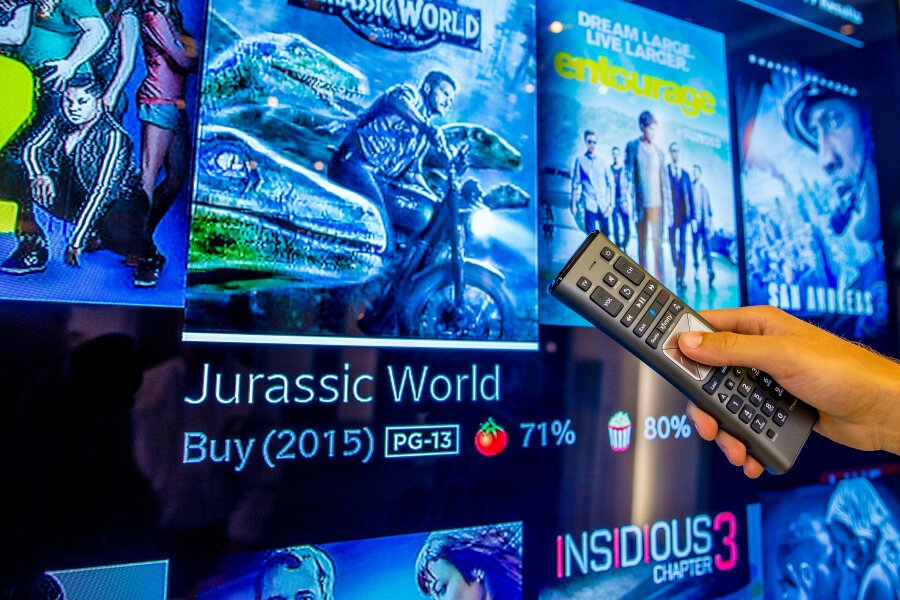What will replace the cable box: a better box or no box at all?
Loading...
The cable box, a crucial part of home theaters for decades, might be on the way out. Casual TV watchers say it’s easier to find something to watch through online services such as Netflix and Hulu than it is to flip through hundreds of channels in hopes of finding something interesting. Other viewers complain that the boxes are poorly programmed and difficult to use. Even Congress doesn’t particularly like the cable box: Senators Ed Markey (D-MA) and Richard Blumenthal (D-CT) recently decried the high cost most customers pay to rent one from their provider.
Cable companies are of two minds about this trend. Some, such as Comcast, are trying to find ways to make cable boxes better. Instead of ugly units with clumsy remote controls, they’re scrambling to produce sleeker boxes loaded with software that makes it easier to get straight to TV shows and movies.
Comcast is pouring resources into its X1 DVR platform, which presents content in a Netflix-like grid interface, combining Internet content with live TV and saving users from having to flip through channels. The X1 is powered by a remote control that works without needing an unobstructed line-of-sight to the cable box itself, and Comcast has also developed an iOS app that can control the box.
Other cable companies are embracing a future without cable boxes. “Where we’re headed is the ability of customers to access the complete video product without having to rent a set-top box from us,” Time Warner Cable CEO Rob Marcus said during a financial call on October 29.
The company is going to use New York City as a test bed for a streaming-only cable TV service delivered via customers’ Internet connections, rather than their cable boxes. Customers would be able to add and drop services online, rather than having to have a technician come out to hook up their cable. Cable company Charter already offers a streaming-only plan for $13, which includes the major networks and HBO or Showtime.
The shift from hardware cable boxes to over-the-top streaming services may be convenient for consumers, but it may also raise "Net Neutrality" concerns, depending on how cable companies implement their plans. The Federal Communications Commission’s Open Internet rules, passed earlier this year, say that service providers must treat all traffic equally – so a cable company couldn’t favor its own streaming service over, say, Netflix by delivering data more quickly or by exempting its own service from data caps. If Time Warner’s, Charter’s, or Comcast’s streaming service is delivered over the same wires as the public Internet, the companies must treat those services equally to all other traffic.






